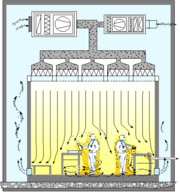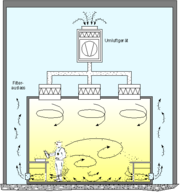dedicated thread
advanced techniques, experimental methods, tests...
plant physiology+manipulation, environmental engineering
goal
collect & share various advanced, & experimental techniques from around the world of gardening.
*propose & proceed w/ tests re the viability of fertilizers (organic, chemical, foodstuffs, &/or other materials)
*lighting/photoperiod manipulation
*temperature (root, canopy, environment @ large, day/night (diff) *watering frequency, amount, quality, recycling, etc.
*foilar feeding
*additives
*supplements
*catalysts
*flowering boosters
*vegetative boosters
*mechanical, electrical, hvac, environmental engineering & greenhouse engineering in indoor gardens
*advanced math, conversions & formulas
**et al, etc...
rule
every garden/er is distinct, different & respected.
not a debate thread.
not lifestyle thread.
not social networking thread...
just raw scientific facts...reference materials, white papers, wild experiments, collective tests, plant physiology & manipulation repository.
thread is not for new gardeners seeking basic knowledge... unless new gardeners are experimental & dont seek to run these experiments as standard gardens.
thread is for gardeners that are inclined to engineer, run many different medias/systems @ one time, or have run many different types of gardens, & wont snivel if a test/method described kills a plant or two...
thread is not to instruct, teach, persuade or convince - just to share raw data & go to the furthest reaches of indoor gardening...
thats basically it... until/unless other points arise...
advanced techniques...
experimental methods...
tests...
plant physiology & manipulation...
environmental engineering...
for enthusiasts that truly enjoy their gardens...
advanced techniques, experimental methods, tests...
plant physiology+manipulation, environmental engineering
goal
collect & share various advanced, & experimental techniques from around the world of gardening.
*propose & proceed w/ tests re the viability of fertilizers (organic, chemical, foodstuffs, &/or other materials)
*lighting/photoperiod manipulation
*temperature (root, canopy, environment @ large, day/night (diff) *watering frequency, amount, quality, recycling, etc.
*foilar feeding
*additives
*supplements
*catalysts
*flowering boosters
*vegetative boosters
*mechanical, electrical, hvac, environmental engineering & greenhouse engineering in indoor gardens
*advanced math, conversions & formulas
**et al, etc...
rule
every garden/er is distinct, different & respected.
not a debate thread.
not lifestyle thread.
not social networking thread...
just raw scientific facts...reference materials, white papers, wild experiments, collective tests, plant physiology & manipulation repository.
thread is not for new gardeners seeking basic knowledge... unless new gardeners are experimental & dont seek to run these experiments as standard gardens.
thread is for gardeners that are inclined to engineer, run many different medias/systems @ one time, or have run many different types of gardens, & wont snivel if a test/method described kills a plant or two...
thread is not to instruct, teach, persuade or convince - just to share raw data & go to the furthest reaches of indoor gardening...
thats basically it... until/unless other points arise...
advanced techniques...
experimental methods...
tests...
plant physiology & manipulation...
environmental engineering...
for enthusiasts that truly enjoy their gardens...





 lol
lol
